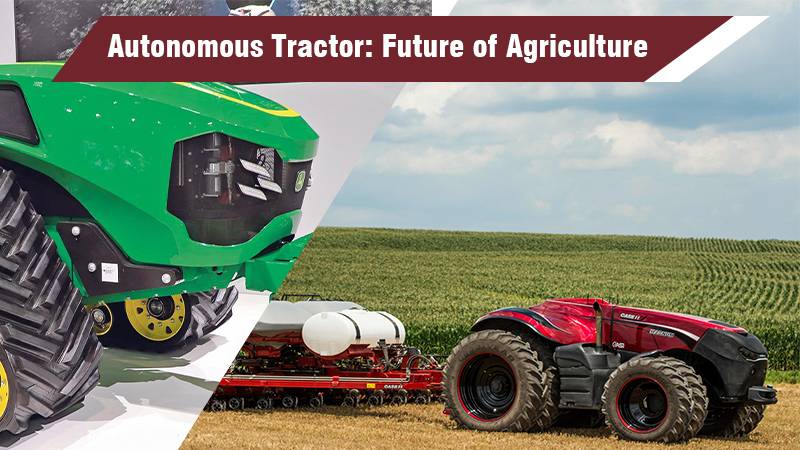Introduction
The agricultural sector has come a long way from the days of manual labor and traditional farming methods. With advancements in technology, automation has become a key driver of progress in the industry. Among the most noteworthy innovations are autonomous tractors, which are poised to play a pivotal role in the future of farming.
In this blog post, we will explore the trends that are propelling autonomous tractors into the agricultural mainstream. From AI-powered precision farming to sustainability-focused innovations, the future of these machines promises a bountiful harvest of benefits for farmers and the environment alike.
- AI and Precision Farming
One of the most significant trends in the development of autonomous tractors is the integration of artificial intelligence (AI) for precision farming. These tractors are equipped with sensors and AI algorithms that allow them to make real-time decisions about planting, irrigation, and harvesting. This level of precision maximizes crop yields while minimizing resource waste.
Precision farming with autonomous tractors involves:
Soil Analysis: AI-powered tractors can analyze soil composition and health, enabling farmers to make data-driven decisions about fertilizer application.
Planting and Seeding: These tractors can plant seeds at optimal depths and spacing, resulting in more consistent and healthier crop growth.
Weed and Pest Control: Autonomous tractors can identify and selectively target weeds and pests, reducing the need for chemical interventions.
Harvesting: AI ensures that crops are harvested at the peak of ripeness, maximizing yield and quality.
- Connectivity and Data Sharing
The future of autonomous tractors is undeniably linked to connectivity. These machines are becoming part of the Internet of Things (IoT) ecosystem on the farm. Through sensors and GPS technology, they can communicate with each other and share vital data with farmers and other agricultural equipment. This interconnectedness allows for better decision-making and more efficient farm management.
Some key aspects of connectivity in autonomous tractors include:
Remote Monitoring: Farmers can remotely monitor the status and performance of their tractors, reducing the need for physical oversight.
Data Analytics: The data collected by autonomous tractors can be analyzed to optimize farming practices, predict crop yields, and detect equipment issues before they become critical.
Fleet Management: Farms with multiple autonomous tractors can coordinate their operations more effectively, resulting in increased productivity.
- Sustainability and Environmental Benefits
The future of farming must prioritize sustainability, and autonomous tractors are playing a significant role in this regard. These machines are designed to be more environmentally friendly and resource-efficient compared to traditional farming methods. Here’s how they contribute to sustainability:
Reduced Chemical Usage: Autonomous tractors can target specific areas for pest control and fertilizer application, reducing the overall use of chemicals and minimizing environmental impact.
Energy Efficiency: Many autonomous tractors are electric or hybrid, which reduces greenhouse gas emissions compared to traditional diesel-powered tractors.
Precision Irrigation: AI-driven tractors can optimize irrigation schedules and target water delivery, reducing water wastage in agriculture.
Minimal Soil Disturbance: Autonomous tractors can operate with high precision, minimizing soil compaction and erosion, which are common issues in conventional farming.
- Autonomous Fleets and Swarming Technology
As technology advances, we can expect to see the emergence of autonomous tractor fleets and swarming technology. This concept involves multiple autonomous tractors working together in a coordinated manner, much like a swarm of bees. This approach offers several advantages:
Increased Efficiency: Swarming technology allows for more simultaneous and coordinated tasks, increasing the overall efficiency of farm operations.
Scalability: Farmers can scale their operations easily by adding more autonomous tractors to their fleet, adapting to changing needs.
Reduced Labor Costs: Fewer human operators are needed to manage a fleet of autonomous tractors, reducing labor costs and addressing labor shortages in agriculture.
Conclusion
The future of autonomous tractors in agriculture is bright and promising. With the integration of AI, connectivity, sustainability-focused innovations, and the potential for autonomous fleets, these machines are set to transform farming as we know it. As technology continues to advance, farmers will have the tools they need to increase efficiency, reduce environmental impact, and meet the growing global demand for food. The future of farming is autonomous, and it’s a future that holds great potential for both farmers and the planet.





